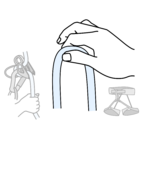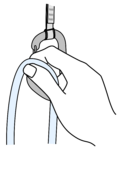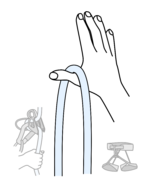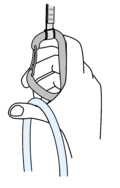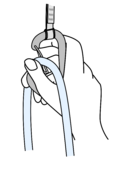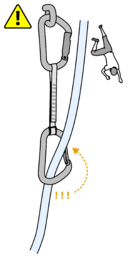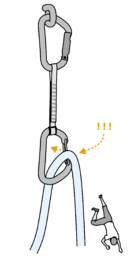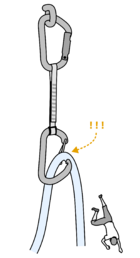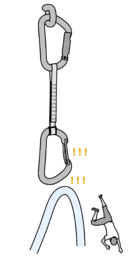Clipping
| Clipping | |
|---|---|
| Use(s) | Lead climbing, mountaineering |
Review state This page has not been reviewed yet (review state explanation). |
For lead-climbing, it is crucial to be able to clip the quickdraw reliably and with ease.
Clipping with fingers
This clipping method works only with the right hand - carabiner gate faces left, or with the left hand - gate faces right. If the gate faces the opposite side, use the second method in clipping with hand section.
Clipping with hand
This clipping method works only with the right hand - carabiner gate faces left, or with the left hand - gate faces right. If the gate faces opposite side, use the method below.
While using this method, keep your fingers outside of the carabiner body, pushing only the rope through the gate. This clipping method works only with the right hand - carabiner gate faces right, or with the left hand - gate faces left. If the gate faces opposite side, use the methods above.
Risks
Aside from safety recommendations for carabiners, there are few more rules to follow while clipping quickdraws.
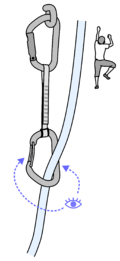
Position the carabiner in a way that the gate is pointed away from the direction of climb. 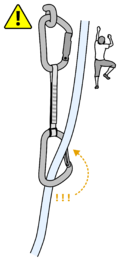
Improper positioning of the gate can lead to unclipping of the carabiner during a fall. 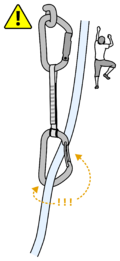
Backclipping of the carabiner is also risky as it might also lead to the uncliping of the carabiner. 
If direction of the climb is uncertain, securing can be done by placing two carabiners with gates pointed in the opposite directions. 
alternatively, carabiner with a screw-gate can be used for the same purpose.
Self-unclipping of the rope during a fall
If the carabiner is positioned and/or clipped wrong, the lead climber risks that the rope unclips itself from the carabiner during a fall. The risk increases if the carabiner is back-clipped.
